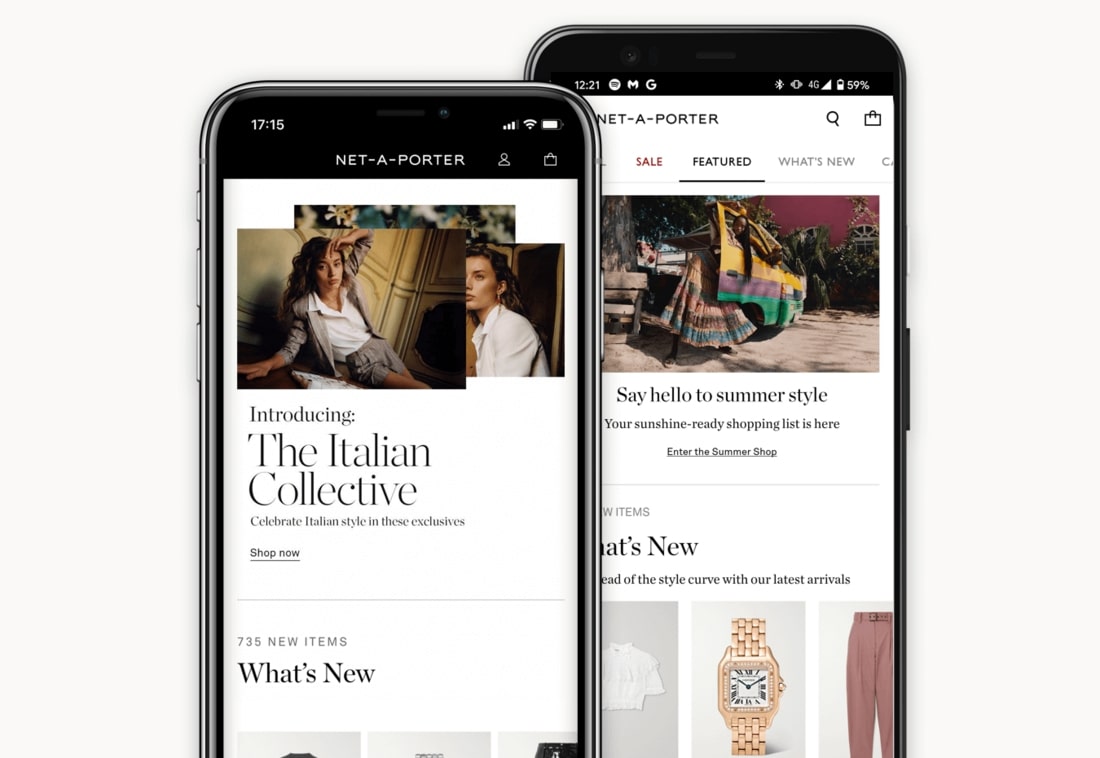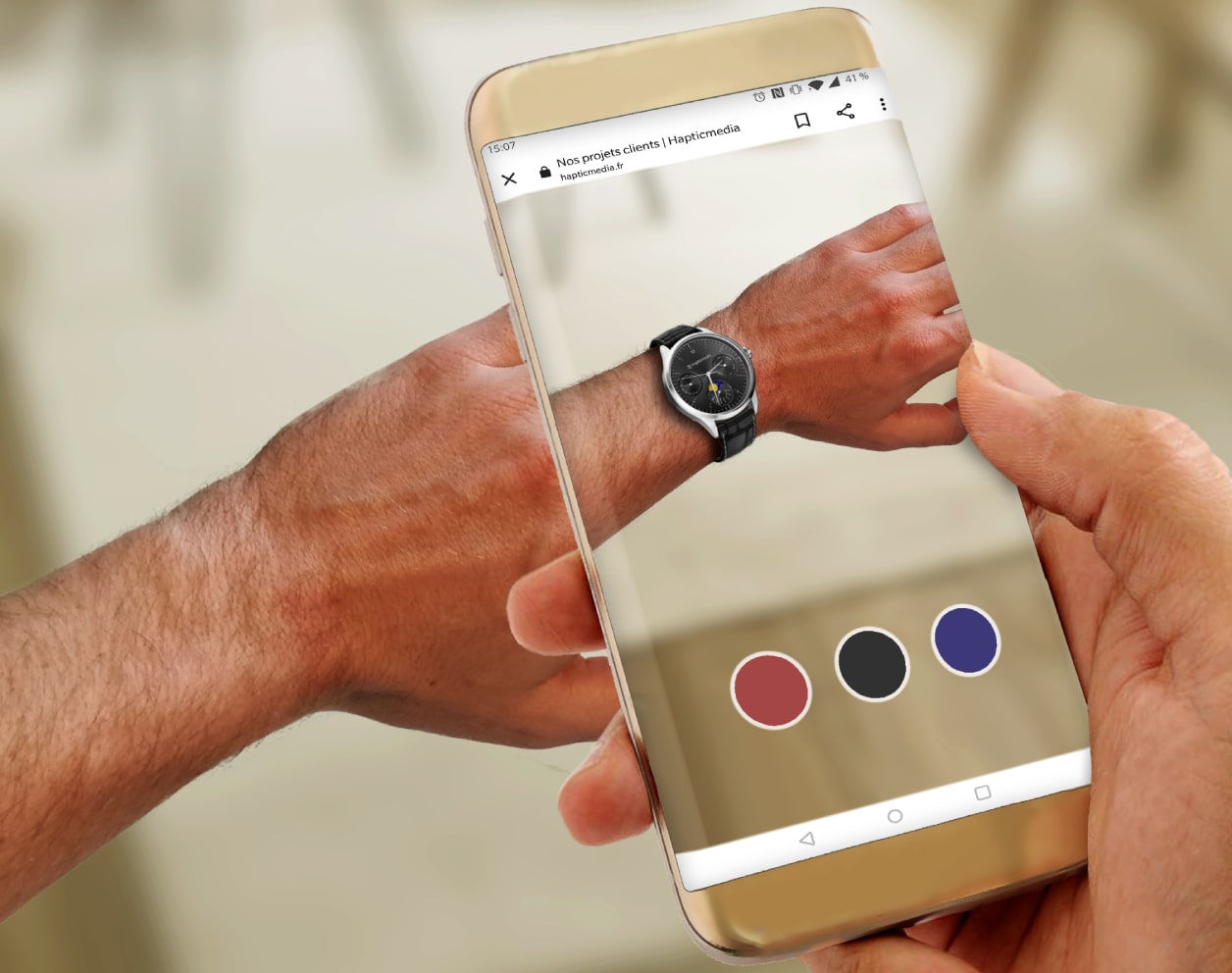App marketing in the luxury business: How to make the most of it?
By Yahong Zhang |Table of contents
E-commerce and online luxury shopping is growing rapidly
Based on estimates from Internet retailers, worldwide online sales of luxury personal goods were projected to reach $33.9 billion in 2018, 21% more than in 2017, according to the Luxury Retailer Report. This meant that the increase in digital commerce was significantly higher than the 7% growth projected for the industry as a whole.
Moreover, as the same report showcases, the sum spent online by luxury consumers is three times higher than the overall average order value, which emphasizes the great potential the industry has.
It is in this context that more and more luxury brands are going beyond the actual browsing experience and are developing their direct-to-consumer apps, managing to do what was considered impossible for decades, i.e., selling high-end goods digitally.
According to Bain, e-commerce will account for 30% of the luxury goods market by 2025.
As the We are Social Digital 2021 report showcases, 66.6% of the world’s population uses a mobile connection, and the average consumers spend almost 4 hours and 10 minutes on their mobile phones, using apps.
Net-a-Porter is boosting online luxury shopping
 Image source: NET‑A‑PORTER.
Image source: NET‑A‑PORTER.
Net-a-Porter was launched in 2000. It is an online shopping platform for the modern, luxury consumer.
At first, the luxury world was reticent to online shopping and designers were focused primarily on physical stores. And now, the platform curates products from over 800 fashion brands and 200 beauty brands, delivers to over 170 countries and has become the go-to source for the world’s luxury shoppers.
The Net-a-Porter app accounts for 50% of sales
An important milestone in the Net-a-Porter timeline was in May 2019, when the company launched its upgraded mobile app. According to the Yoox Net-a-Porter Group representatives, over half of purchases were made through mobile devices in 2019, which draws great attention to the company’s m-commerce strategy. In deed, mobile acquisitions are expected to grow in the coming years.
According to research, the Net-a-Porter app had 642,000 monthly active users, most of its engaged audiences residing in Italy, Russia, the US and China.
Multibrand luxury apps paved the way for m-commerce
Several mobile apps have proved to be extremely successful in the luxury business. Farfetch, for example, the tech company that has its roots in 2007 East London, operates the world’s largest app for luxury goods. According to Air Now Data, the app is particularly used in Russia, China, the US and Saudi Arabia, with a pool of over 1.2 million active users in 2019.

Image source: Farfetch.
The Yoox Net-a-Porter Group also launched an app for Mr. Porter, its male luxury division. With over 309,000 monthly users in 2019, the app is particularly influential in the Middle East and Asia, where 40% of its users reside.
Other relevant m-commerce apps include MyTheresa (171,000 monthly active users in 2019, out of whom 20% from China and Saudi Arabia) and MatchesFashion.com, with 103,000 monthly active users in 2019, particularly popular in East Asia.
Luxury brands are tapping into the app world
In time, luxury brands have started to tap into the app world, either by collaborating with names like Farfetch and Yoox Net-a-Porter or by integrating app marketing in their strategies, hoping to create an engaging environment which would help to bond with consumers.
The point of app developing and app marketing wasn’t only to create another direct-to-consumer channel, but also to generate a different brand-consumer interaction, which would, in return, help luxury brands to gain more insight about the consumers and thus foster relationships.
According to Tech Jury, the average consumer has 80 apps on their phone, but only uses 9 on a daily basis, which means that the battle for attention is extremely fierce. This is why any app that is downloaded needs to bring added value to the user’s lifestyle.
For luxury brands, there are several benefits to creating an app. First of all, it acts like a direct-to-consumer sales channel, which enables brands to generate more sales when used correctly.
Secondly, it enables brands to narrow their audience and take the conversation from public to private. If social media are the channels which enable companies to interact with different segments of consumers, then apps help bridge the gap between consumers and brands by ensuring that information is offered to those who really have an interest in buying.
Moreover, this practice enables companies to collect consumer information that is significantly more accurate and useful than the limited resources received from social media or market research.
App marketing in the luxury business
1. Offer remarkable user experience
Good user interface and user experience are essential for any luxury app. They contribute to capturing consumers and helping them navigate the brand environment, increasing their chances of completing conversion goals and finishing the customer journey.
Moreover, an app is a representative channel for any brand, that is why it has to respect the company’s values and attributes and communicate in the same tone.
In order for consumers to enjoy the full benefits of an app, the experience needs to be simplified, fluid and intuitive.
This is the case of Farfetch, for example, the luxury app can be smoothly navigated by consumers.
2. Focus on carefully selected visuals
When it comes to luxury, visuals are extremely important. Consumers buy aspirational items, because they fit into the mental picture of their ideal lifestyles, so ensuring an app makes great use of photography and video is extremely important.
This is why each element that is sold needs to be showcased and have a clear product photo for it. Apparel, clothing, footwear, cosmetics etc. should be presented in every color and style, to ensure consumers benefit from accurate representations of what they should buy.
Sometimes, this can be complicated to attain, if we take into account that taking individual photos for each collection piece may prove resource consuming. A great way to do so, though, is by using 3D visualization, computer-generated imagery that may replace actual product photos. This cuts costs both on production - one doesn’t need to produce the physical object - and on the shoot.
Still, one doesn’t only need to focus on the product and campaign imagery, but also on where each element of the design falls in the app. As people love to screenshot items and share them with their friends, one needs to ensure that each capture looks appealing, identifying the brand and its elements.
From this perspective, the Matches Fashion app is extremely well thought. The experience is extremely visual, the photos are carefully curated. The front page is a good mix of lifestyle and product imagery, which creates a dynamic, appealing look.
3. Collect data and use it to offer personalized experiences
Apps enable marketers to understand how consumers are behaving, to what they are attracted and what their user journey is.
The Yoox Net-a-Porter Group, for example, benefits from an innovation hub in London, where the company collects and studies data, draws conclusions and recommendations.
By integrating data across different business levels, it enables luxury brands to make more effective, faster decisions, which, in return, allows them to create personalized experiences for consumers.
The purpose of this strategy is to release humans of time-consuming decisions, enabling them to focus on the customer-oriented, creative aspects of luxury.
4. Develop an app that enables agility
When it comes to the development of digital tools, it is always important to create frameworks that allow to rapidly introduce new features that would enhance the user experience.
This is why luxury marketers need to discuss with their suppliers and ensure they clarify how important innovation is and how much flexibility their technology offers.
This means that, each time changes need to be made, the structure platform allows it.
This has been the premise of Net-a-Porter’s app, which benefits from a design system made in-house, called Hive, which is based on modular and reusable components that enable the company to consistently introduce features, as Fashion United points out.
5. Offer virtual try-on

A great example of integrating virtual try on technology into the multi channel marketing strategy can be taken from Baume, a high- end Swiss watchmaking brand.
Virtual try-on has become a must for luxury brands, especially in the past year, when brick-and-mortar stores have been closed due to COVID-19 restrictions.
Still, brands like Gucci have taken it to the next level, by allowing app users to try everything, from shoes, to sunglasses, watches, hats, lipsticks etc.
Through the usage of augmented reality and 3D design, luxury brands’ apps may create immersive experiences for consumers, as well as enable them to test products, photograph themselves and post images to social media.
For the Gucci community, virtual try-on has such potential, that the brand developed a $12 digital sneaker, available on its app.
6. Include gamification and contests
According to the We are Social 2021 Digital report, over 69% of mobile users confirm using shopping apps, while 67.2% access entertainment apps and 52% game apps.
It is, thus, clear that, when using their phones, consumers are looking for more than just convenience, they search for entertainment, in all its forms.
In order to catch their audience’s attention, luxury apps need to be more than just shopping apps, so they should deliver entertaining experiences, like video games, tell stories and immerse consumers in the brand’s narrative.
Balmain’s app, for example, categorized under entertainment, is a mix of AR experiences and gamification, with the app having its own B game, with Balmain specific elements, that consumers may play in different modes - Story, Normal and Zen.
Gucci, as well, offers an arcade section, where games are inspired by different brand beauty and clothing collections. Some levels are even locked and they may only be accessed through payments with the Gucci coins.
7. Offer 3D configuration
Offering consumers a playground where they could configure their products and create signature styles is an excellent reason to use an app.
Allowing users to put together certain products, choosing their favorite color schemes, customizing designs to add their personal style signatures, as well as personalize their items, all these options are extremely valuable in today’s luxury marketing landscape.
Consumers want to showcase their uniqueness and they will become loyal to brands that understand and acknowledge this need in a fun, visual, engaging way.
The JORI Configurator, the app which enables users to create and visualize their favorite furniture pieces and combine colors, fabrics, elements and options according to their preferences, as well as get a price estimate which may be later validated with the retailer.
Contact us: 3D visualization, augmented reality, virtual try on, customization
Hapticmedia has over 15 years of expertise in immersive technologies including 3D visualization, customization and configuration, engraving, Augmented Reality, Virtual Try On, and is supported and covered by LVMH, Forbes, Les Echos, Le Point, BFMTV. Check here to see our client projects with Gerlain, Kenzo, Baume & Mercier, Baccarat, Edenly or contact us now to see the visible improvement we will bring to you.
Sources
https://www.glossy.co/fashion/luxury-retailers-are-experimenting-with-apps-is-it-the-right-move/
https://fashionunited.uk/news/fashion/yoox-net-a-porter-launches-upgraded-ios-app/2019052143272
https://luxe.digital/business/digital-luxury-reports/online-luxury-retail-transformation/
https://www.businessoffashion.com/case-studies/luxury/case-study-luxury-ecommerce-online-retail
https://www.harpersbazaar.com/uk/fashion/a32976848/evolution-luxury-e-commerce/
https://www.digitalcommerce360.com/product/luxury-retailer-report/
https://wearesocial.com/blog/2021/01/digital-2021-the-latest-insights-into-the-state-of-digital
https://www.voguebusiness.com/companies/yoox-net-a-porter-ceo-federico-marchetti-ynap
https://airnowdata.com/blog/who-is-winning-the-luxury-e-commerce-race-articles-market-reports
Contact Hapticmedia now to see our successful user cases and the visible improvement we have brought to our clients. You will be amazed.